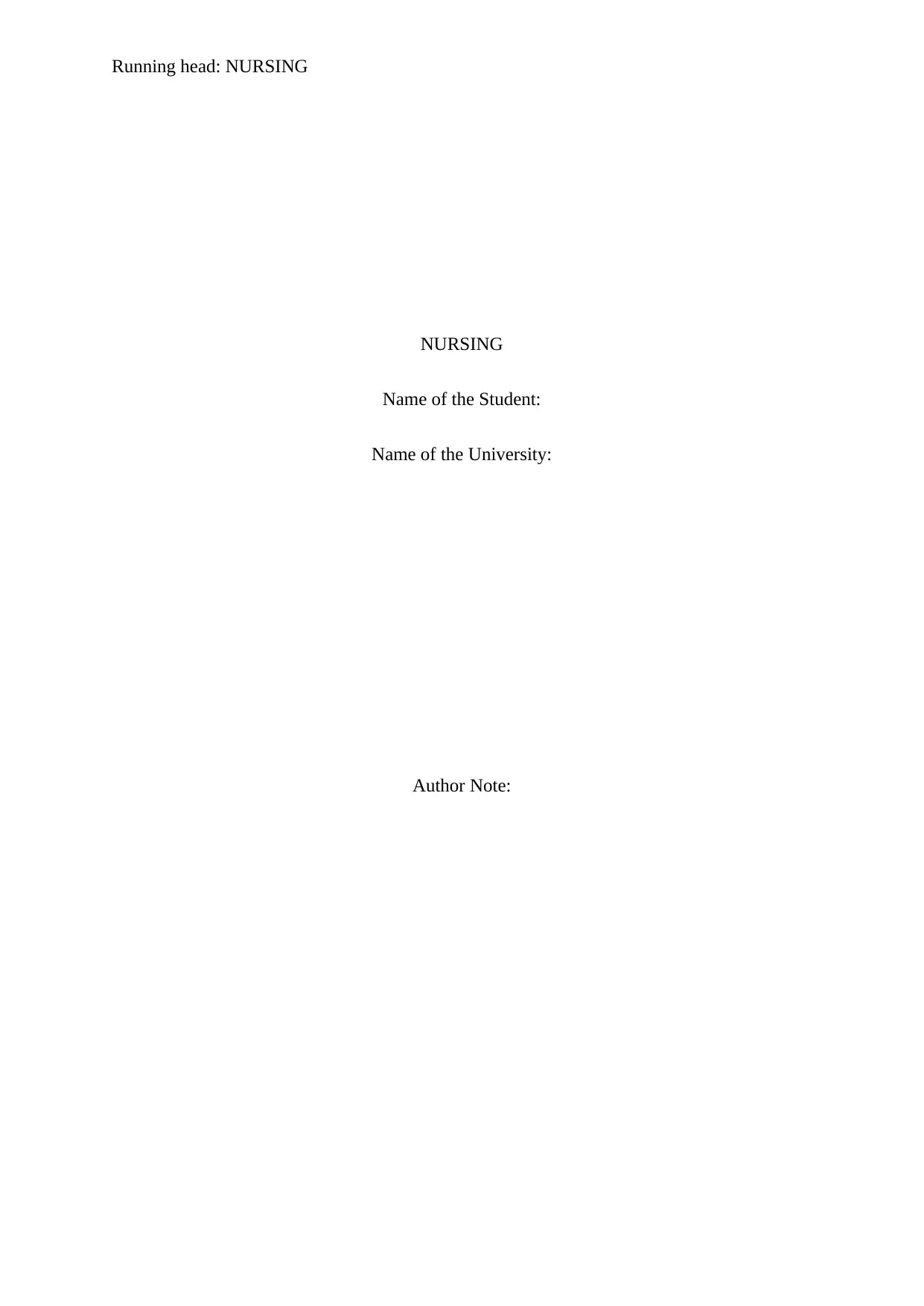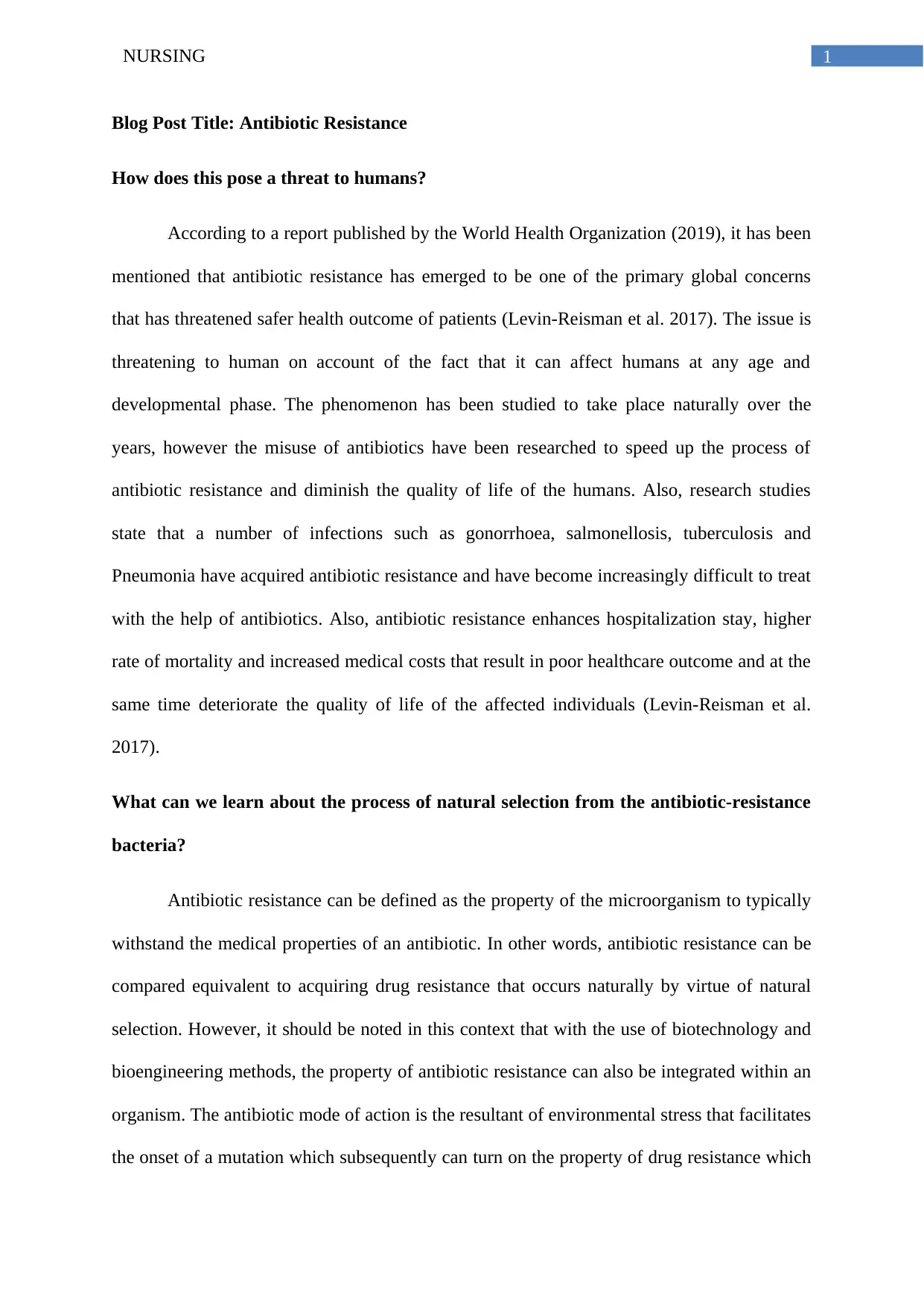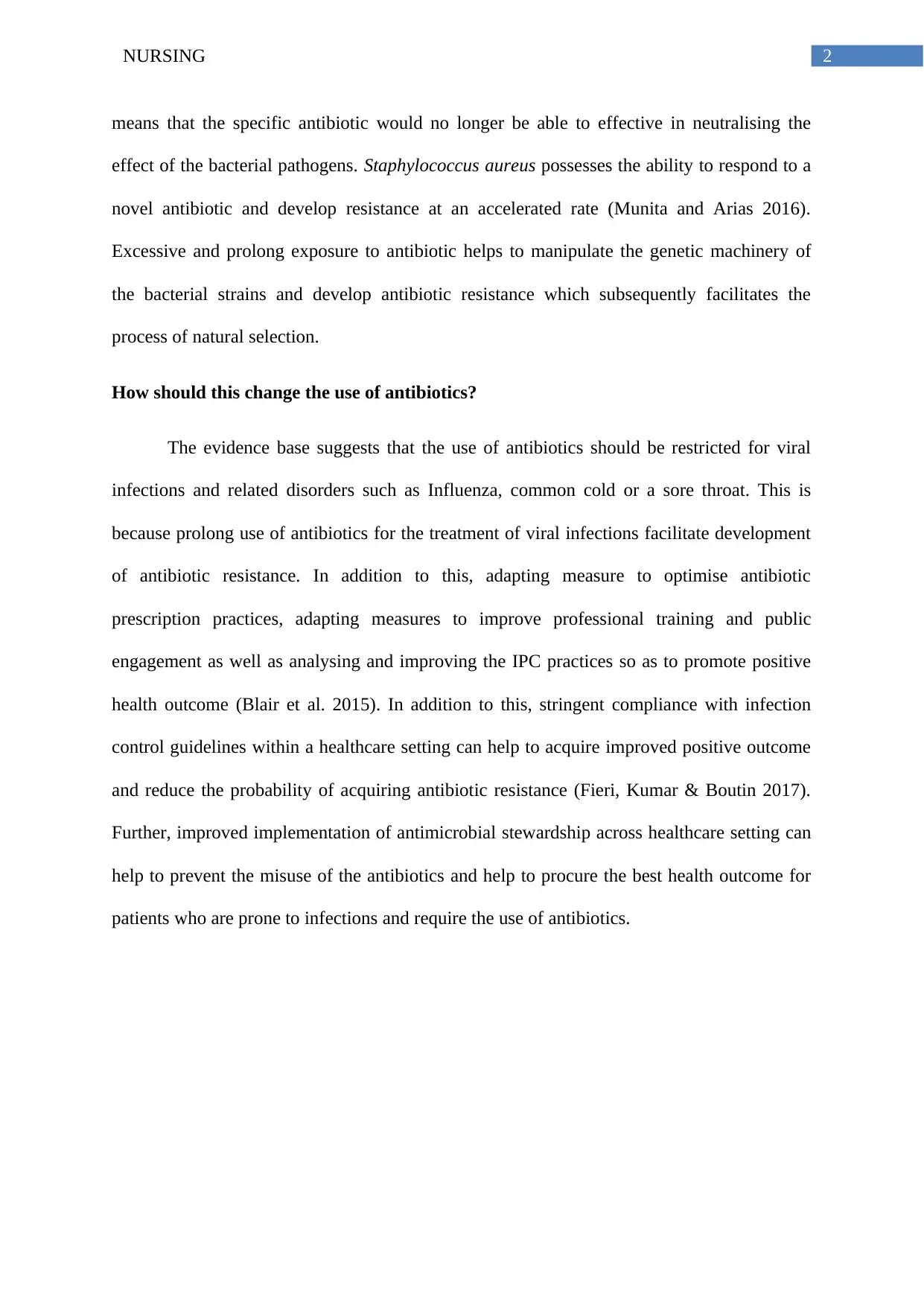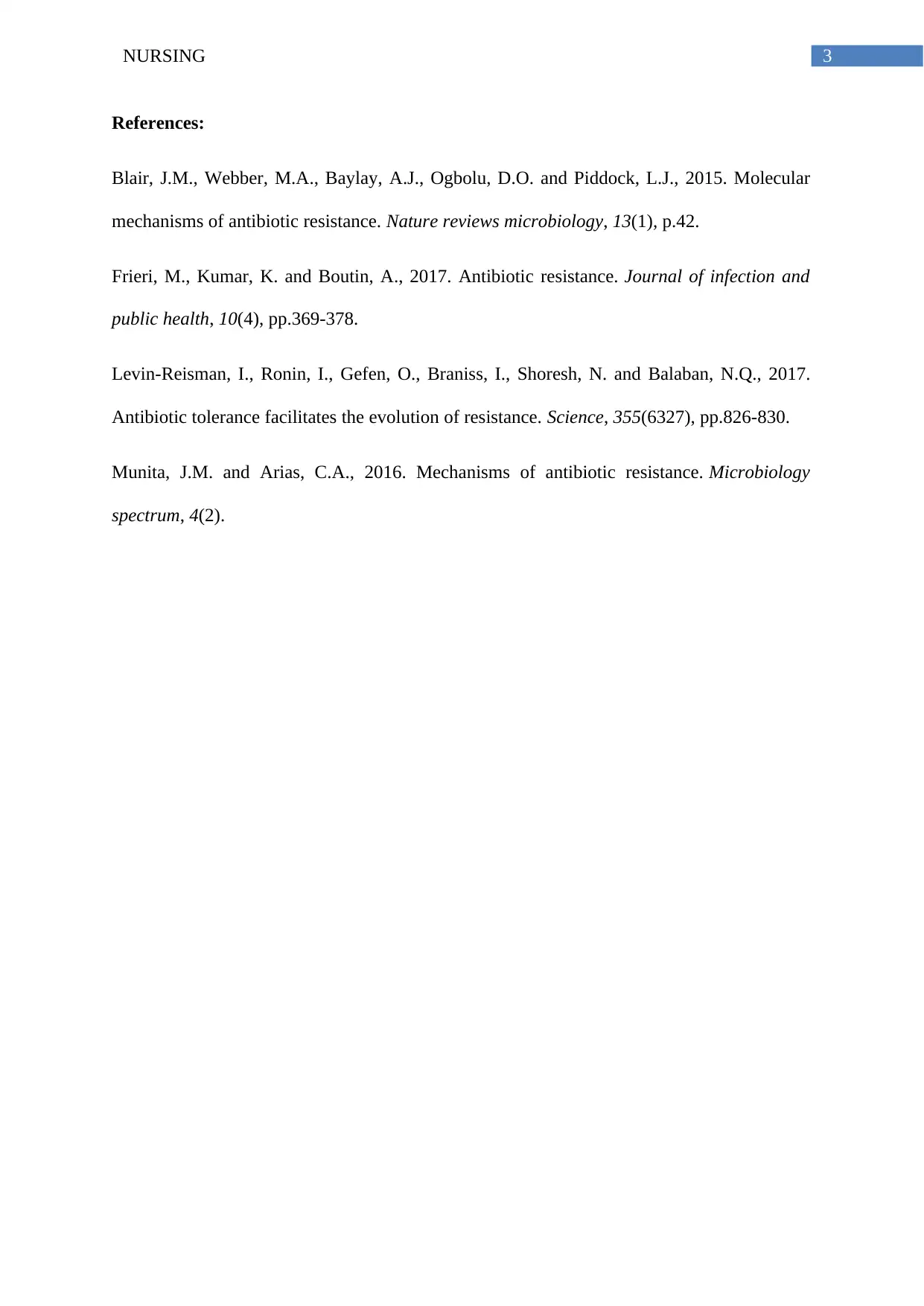Nursing 3 Assignment: Antibiotic Resistance, Threat, and Solutions
VerifiedAdded on 2022/11/22
|4
|744
|440
Homework Assignment
AI Summary
This nursing assignment delves into the critical issue of antibiotic resistance, a significant global health concern. The assignment discusses how antibiotic resistance poses a threat to humans of all ages, detailing how the misuse of antibiotics accelerates this process, leading to infections like gonorrhoea, salmonellosis, and pneumonia becoming increasingly difficult to treat. It examines the concept of natural selection in antibiotic-resistant bacteria, explaining how microorganisms develop resistance through mutations triggered by environmental stress and prolonged antibiotic exposure. The assignment further addresses how the use of antibiotics should be changed, advocating for restricted use in viral infections, optimized prescription practices, improved professional training, and stringent compliance with infection control guidelines to mitigate the problem. The importance of antimicrobial stewardship is also highlighted as a means to prevent antibiotic misuse and improve patient outcomes.
1 out of 4











![[object Object]](/_next/static/media/star-bottom.7253800d.svg)